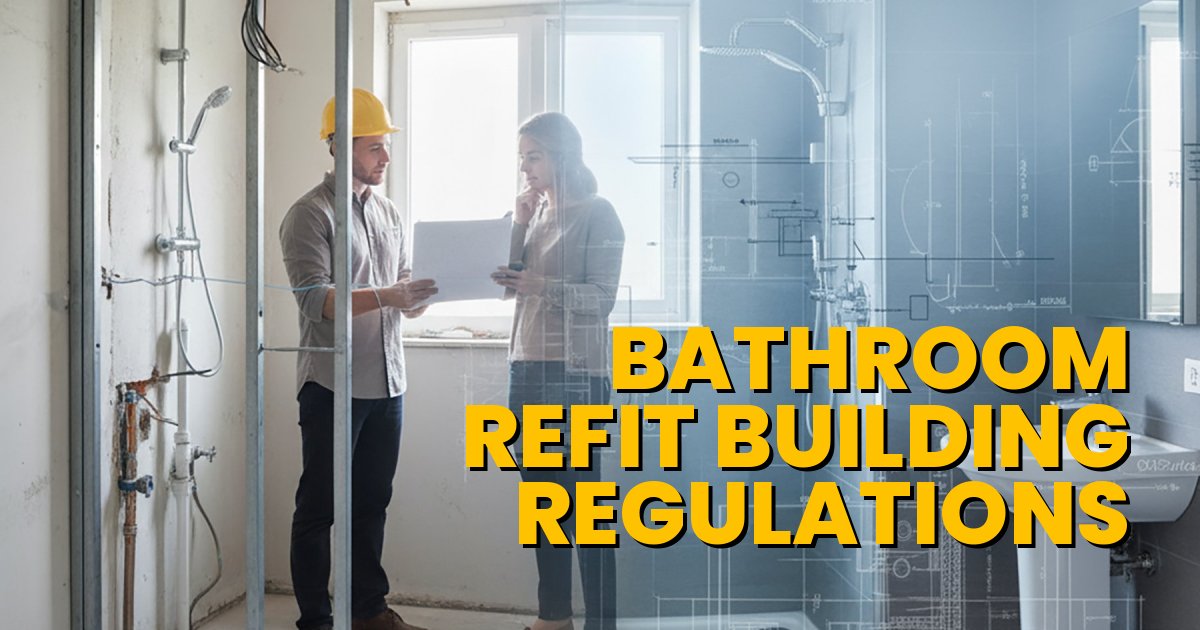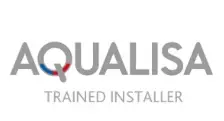
Planning a bathroom makeover or bathroom refit?
That fresh, revitalised space is so rewarding, but before you get carried away with tiles and lighting, it’s important to make sure your plans follow UK Building Regulations.
These regulations ensure your bathroom is safe, hygienic, energy-efficient and accessible.
At HTS, we take care of every detail to make sure your new bathroom not only looks the part but also meets all necessary regulations. If your property is in St Albans or Watford, it’s worth knowing that both councils operate a shared Building Control service, making it easier and faster to ensure compliance and benefit from expert advice. We liaise with these services where needed, giving you peace of mind that everything is done correctly.
Here we have broken down the building regulations that need to be considered, dependent on the nature of your bathroom refurbishment or refit.
What are building regulations for bathroom refurbishments and refitting?
Building Regulations are legal standards under the Building Act 1984. When refurbishing a bathroom, the following key aspects are covered:
- Part G: Sanitation, hot water safety & water efficiency
- Part F: Ventilation
- Part P: Electrical safety in wet zones
- Part H: Drainage & moisture control
- Part M: Accessibility and inclusive design
These ensure each bathroom project is safe, healthy, efficient, and future-friendly.
When and where do I follow these regulations in St Albans or Watford?
- Simple cosmetic changes, like swapping tiles or updating fittings, usually don’t need approval.
- But any work involving plumbing, electrics, ventilation, drainage or structural changes generally requires Building Control approval.
- You may apply via the Full Plans or Building Notice routes or use retrospective regularisation for existing unapproved works.
- The shared service covers both St Albans and Watford, offering fast, customer-focused support, pre-application advice, efficient inspections, and streamlined communication.
Visit: St Albans Building Control or Watford Building Control
Why are these regulations so important?
Bathrooms are complex spaces, running water, electricity, and moisture meet in small areas.
Compliance helps you:
- Keep your family safe from electrical risks or leaks
- Prevent mould, damp and structural damage
- Enhance energy and water efficiency, saving bills and the environment
- Maintain or improve your property’s resale value, buyers want evidence of compliance
- Avoid costly fines or forced remedial work in the future
In St Albans and Watford, the building control team will inspect work at key stages and issue completion certificates, your proof of compliance.
What aspects of regulations apply when refitting a bathroom?
Here’s a breakdown of each key area, with more detail:
1. Sanitary Facilities & Water Safety (Part G)
- Every bathroom must include a washbasin and bath or shower.
- Plumbing systems must prevent contamination and promote hygiene.
- Thermostatic mixing valves are encouraged to reduce scalding risk.
- Water efficiency standards must be met in new dwellings.
2. Ventilation (Part F)
- Bathrooms need adequate moisture extraction, usually via mechanical extract fans.
- Background ventilation (e.g. trickle vents) may also be required.
- Both continuous and intermittent systems are acceptable if they meet airflow requirements.
3. Electrical Safety (Part P)
- Bathrooms are zoned (0, 1, 2), with strict rules for each zone:
- Zone 0 (inside bath/shower): only very low voltage (<12V) and highly IP-rated.
- Zones 1 & 2: specialist IP-rated equipment required.
- Most work in these zones must be notified unless undertaken by a Part P-registered electrician.
- All circuits must be protected by an RCD.
4. Drainage and Moisture Control (Part H)
- Waste must connect to suitable drains or a septic system.
- Pipes must have the proper size, slope and traps to avoid odours or blockages.
- Wet areas need proper tankable membranes or sealing to prevent water damage.
5. Accessibility (Part M)
While not always mandatory for domestic refits, consider:
- Allowing space for wheelchair manoeuvre.
- Installing grab rails, lever handles, and accessible showers.
- Future-proofing with adaptable fixtures.
How to ensure bathroom refit compliance in St Albans and Watford
- Contact Building Control early: They’ll advise whether your work needs approval and which application route (Full Plans, Building Notice, or Regularisation) suits best.
- Submit your application with plans, calculations, and fees, either online or via email.
- Book inspections at key stages: plumbing, damp proofing, drainage, final completion.
- Use competent tradespeople, e.g. Part P electricians or plumbers registered in relevant Competent Person Schemes.
- Once work is done, expect a completion certificate, your assurance of compliance.
Quick Reference Table
|
Activity |
Applicable Part(s) |
Building Control Required? |
|
Installing bath, shower, sink |
G, F, H |
Yes, approval typically needed |
|
Electrical work in bathroom (zones 0–2) |
P |
Yes, unless done by Part P-registered electrician |
|
Upgrading drainage or moisture control |
H |
Yes |
|
Cosmetic-only units replacement |
– |
No, usually no approval required |
|
Ventilation systems upgrade/install |
F |
If it involves new wiring or structural changes |
|
Accessibility enhancements (e.g. grab rails) |
M |
May be required; good practice for adaptable design |
Whether it's pre-application advice, inspections at short notice, or completion certification, we’re here to help you create a fabulous, safe, and compliant bathroom, beautifully done and completely lawful.
Need more advice? Speak to a local Plumber in St Albans or Watford
Find out more about HTS Watford Plumbers and Plumbers in St Albans.





